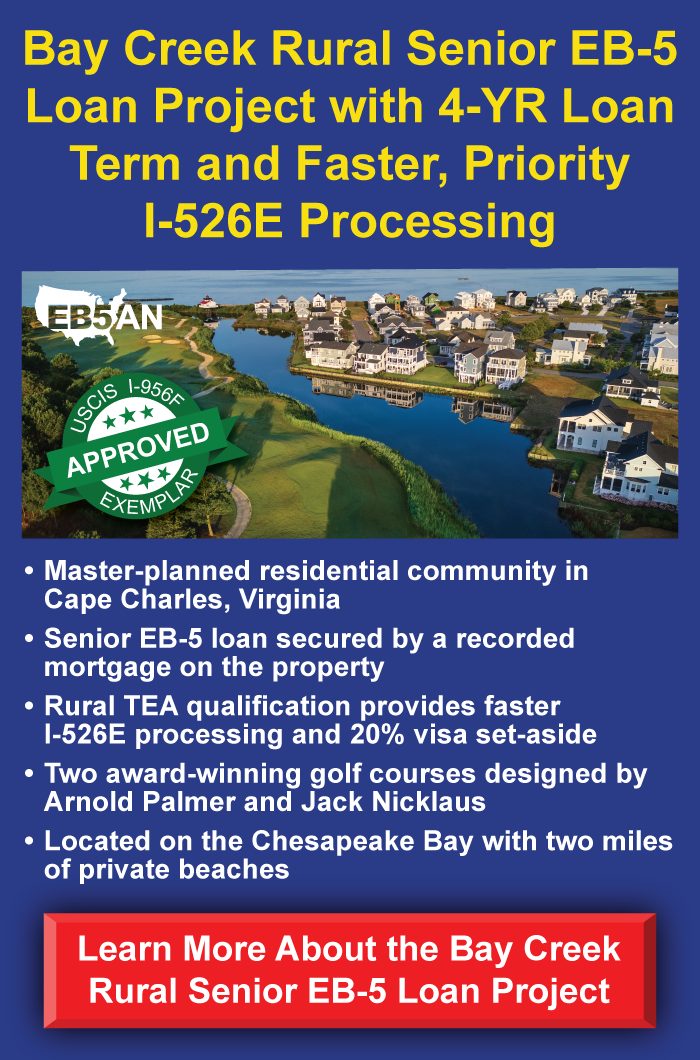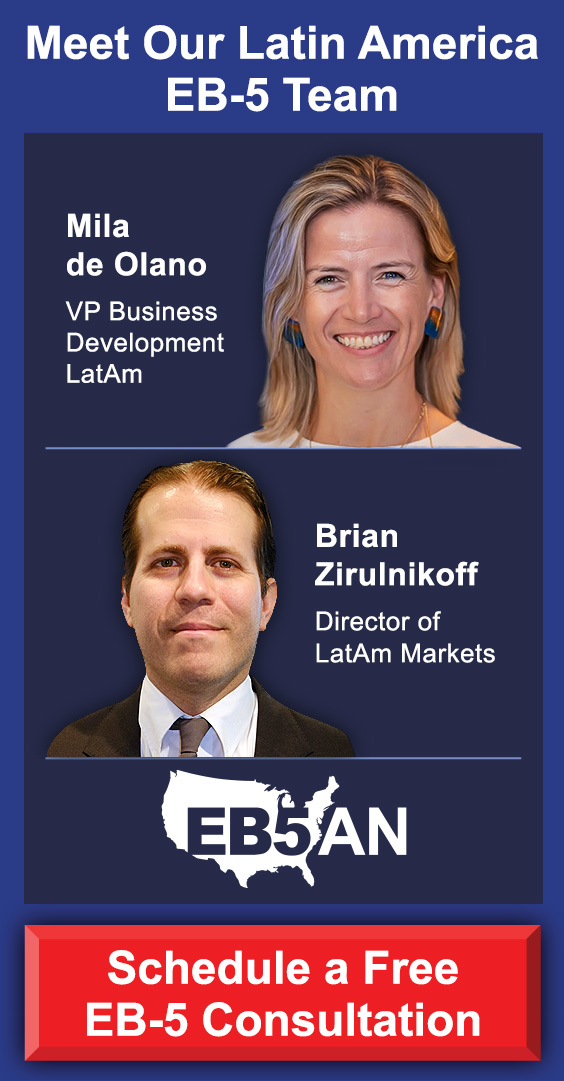For potential EB-5 investors navigating the path to U.S. permanent residency, traveling internationally during the visa process can be a source of uncertainty. Whether you are in the process of applying for an EB-5 visa, waiting for your Form I-526E to be adjudicated, or planning to adjust status to become a Green Card holder, understanding your travel rights and limitations is critical.
In this article, we will explain how EB-5 investors can travel during the visa process, focusing on the implications of nonimmigrant status, the role of advance parole, and how dual intent affects your ability to travel freely.
The EB-5 Visa Process and Travel
Travel While on a Nonimmigrant Visa (H-1B, F-1, etc.)
How Long Can You Stay Abroad During the EB-5 Process?
Advance Parole for Adjustment of Status Applicants
The Importance of Consulting an Immigration Attorney
EB5AN Can Help You Navigate Your EB-5 Process Smoothly
The EB-5 Visa Process and Travel
The EB-5 Investor Visa program provides foreign nationals with a pathway to U.S. permanent residency (Green Card) by investing in a U.S. new commercial enterprise. This visa process involves several steps, beginning with the submission of the Form I-526E (Immigrant Petition by Regional Center Investor), followed by the adjustment of status or consular processing to obtain a Green Card. During this process, many EB-5 investors may find it necessary to travel outside the United States.
However, the key question is: can you travel while your application is pending, and how does it affect your immigration status?
Travel While on a Nonimmigrant Visa (H-1B, F-1, etc.)
Many EB-5 investors come to the U.S. on a nonimmigrant visa such as an H-1B or F-1 visa. Nonimmigrant visas allow temporary stays in the U.S. for work or study purposes. If you are in the U.S. on a valid nonimmigrant visa and have filed your Form I-526E for EB-5, you are typically allowed to travel abroad. However, there are some important considerations to keep in mind:
H-1B Visa Holders
If you hold an H-1B visa (a work visa), you can generally travel abroad and return to the U.S. while your Form I-526E is pending. As long as your H-1B visa is still valid, you can reenter the U.S. after international travel without affecting your EB-5 application. However, you should ensure that you have all the necessary documents, including your H-1B approval notice and any other relevant paperwork.
F-1 Visa Holders
If you hold an F-1 student visa, you can also travel abroad while your EB-5 petition is pending, but your travel is subject to certain conditions. You should ensure that your F-1 visa is valid for reentry into the U.S. Additionally, if you are in the U.S. while your I-526E is being adjudicated, you may face issues with reentry if your F-1 visa expires while abroad. To avoid any complications, check the expiration dates and plan your travel accordingly.
How Long Can You Stay Abroad During the EB-5 Process?
The amount of time you can spend abroad during the EB-5 visa process varies depending on your specific situation. However, extended absences can complicate your ability to reenter the U.S. and may create additional questions about your intentions with your visa status.
If you plan to travel abroad, you should be mindful of the following:
Nonimmigrant Visa Holders
If you are on a nonimmigrant visa like H-1B, you can travel abroad and return, provided your visa is valid for reentry. However, if you stay abroad for a prolonged period, there could be complications when you attempt to reenter the U.S. Prolonged absences could raise doubts about whether you are maintaining your status and may cause delays in your EB-5 petition.
Adjustment of Status Applicants (Form I-485)
If you are adjusting status to a permanent resident through the EB-5 program and you plan to travel abroad, you must obtain advance parole before leaving the U.S. If you leave without advance parole, your I-485 application could be deemed abandoned.
The key takeaway here is that there is no one-size-fits-all rule regarding the amount of time you can spend abroad during your EB-5 visa process. It depends on the specific visa you hold, whether you’ve applied for adjustment of status, and whether you’ve obtained advance parole. Always consult with an immigration attorney to determine the best approach to your travel plans.
Advance Parole for Adjustment of Status Applicants
For EB-5 investors who are already in the U.S. and are applying for a Green Card through adjustment of status (i.e., filing Form I-485), the situation differs. If you intend to adjust your status to become a permanent resident, it is highly advisable to be cautious about traveling outside the U.S. without prior approval.
What Is Advance Parole?
Advance parole is a travel authorization that allows individuals who are in the U.S. and have pending applications for adjustment of status (such as Form I-485) to travel abroad and return to the U.S. without abandoning their adjustment of status process. For EB-5 investors, this means that if you are applying for a Green Card through the EB-5 program and want to travel abroad while your I-485 is pending, you must first apply for and receive advance parole.
If you leave the U.S. without obtaining advance parole, your Form I-485 could be considered abandoned, which may result in delays or even denial of your Green Card application.
To apply for advance parole, you must submit Form I-131 (Application for Travel Documents) to U.S. Citizenship and Immigration Services (USCIS). Once approved, you can use the advance parole document to reenter the U.S. without jeopardizing your adjustment of status.
If their priority date is current, applicants filing from within the U.S. can take advantage of concurrent filing to submit their I-526E, I-485, advance parole, and employment authorization applications simultaneously, helping them avoid additional waiting times.
The Importance of Consulting an Immigration Attorney
Traveling during your EB-5 visa process can be a complicated matter with many legal nuances. Because of the potential risks involved, it is essential to consult with an immigration attorney to understand how your specific situation impacts your ability to travel. They can provide guidance on how to maintain your immigration status, avoid abandoning your application, and apply for the necessary travel documents, such as advance parole.
An experienced immigration attorney can also help you navigate any delays or issues that arise, ensuring that your application for a Green Card remains intact while you travel abroad. Since each case is unique, personalized legal advice is crucial to ensure that your EB-5 investment journey goes smoothly.
EB5AN Can Help You Navigate Your EB-5 Process Smoothly
As an EB-5 investor, traveling abroad while your visa application is pending is possible, but it requires careful planning. Understanding your travel rights is vital to maintaining your immigration status. Unauthorized travel could risk your application, so it is critical to understand the process and consult with an immigration attorney for guidance.
By staying informed and taking the proper steps, you can ensure that your EB-5 journey is successful, even as you plan for travel during the visa process.
EB5AN has helped more than 2,300 families from 70+ countries become lawful permanent residents of the United States. Our expert team has more than a decade of experience and can offer you guidance at every step of your Green Card journey.
If you would like to know more about the EB-5 visa and its various steps, book a free call with our expert team today.











